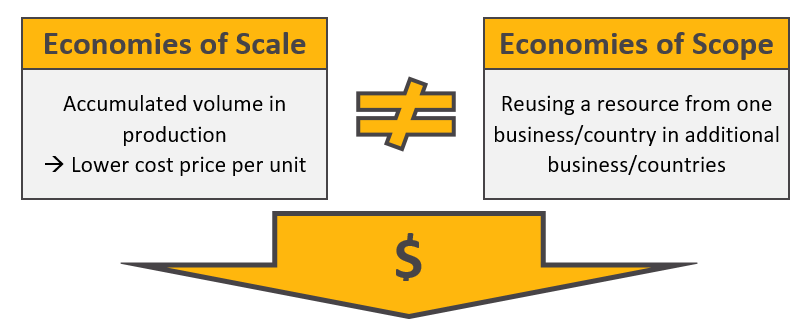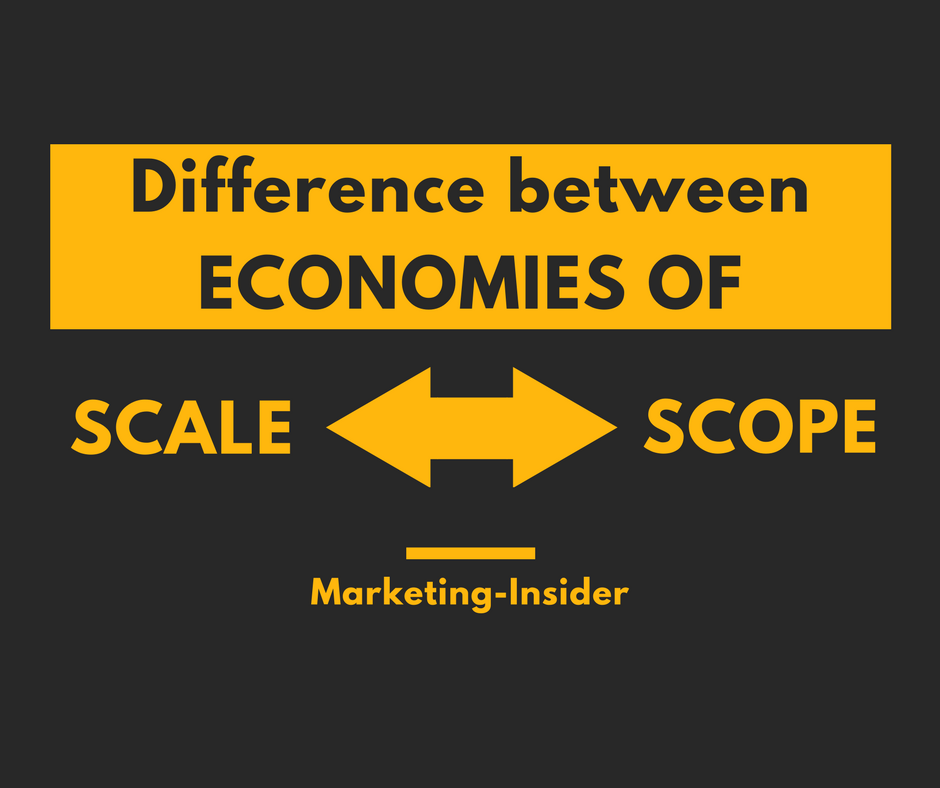Economies of scope and economies of scale are two often confused economic concepts that both have the same eventual objective: helping the company to cut cost. However, it is important to understand the difference between economies of scale and economies of scope, as they are inherently different.
To understand the difference between economies of scale and economies of scope, let’s first try to understand what each means.
Table of Contents
Economies of Scale – Producing more to lower unit cost
At the simplest level, economies of scope focuses on the average total cost of production. The underlying theory is that accumulated volume in production and sales will result in lower cost price per unit. This is a result of the so-called experience-curve effects and increased efficiency in areas such as production, marketing and so on. Economies of scope is often mentioned alongside a firm’s global expansion. The reason: Building a global presence automatically expands a firm’s scale of operations. This gives the firm larger production capacity. The larger scale can indeed be converted into economies of scale, which will create competitive advantage.
There are several benefits of economies of scale:
- Reduced operating costs per unit
- Fixed costs spread over larger volume
- Pooling of global purchasing to concentrate purchasing power over suppliers, leading to volume discounts and lower transaction costs
- Opportunity to build centres of excellence for development of specific technologies or products
Economies of Scope – Wider range of business activities to reuse resources
Before turning to the difference between economies of scale and economies of scope, we must understand what economies of scope means. While economies of scale refers to a larger production volume to drive down unit cost, economies of scope means to engage in a wider range of business activities to reuse resources. Despite the difference between economies of scale and economies of scope, the outcome is the same: efficiencies and resulting cost savings. Synergy effects and global scope can occur, for instance, when the firm is serving several international markets, and reuses the same resources everywhere. The challenge in capturing economies of scope lies in being responsive to the tension between two conflicting needs: the need for centralization of marketing mix elements, and the need for local autonomy in the actual delivery of products and services.
To illustrate economies of scope, let’s look at an example. Most OEMs in the automotive industry use similar engines and gearboxes across their entire product range so that the same engines and gearboxes can go into different models of cars. By resuing resources (in this case the engines and gearboxes) across several products, enormous cost savings are achieved.
Difference between Economies of Scale and Economies of Scope
Reconsider the above example. Automotive OEMs use the same engines and gearboxes (often whole platforms) across several models. Certainly, this involves economies of scope, since resources from one business activity or product are reused for additional business activities or products. However, this tactic does also provide economies of scale: By producing a larger absolute volume of engines and gearboxes, the unit cost of output is decreased.
Let’s sum the difference between economies of scale and economies of scope up:

Difference between Economies of Scale and Economies of Scope
Economies of scale refers to producing more of the same to reduce unit cost.
Economies of scope refers to producing several products/engaging in several business activities to reuse resources and thereby reduce overall cost.
Despite the difference between economies of scale and economies of scope, both concepts help the company to cut cost.
